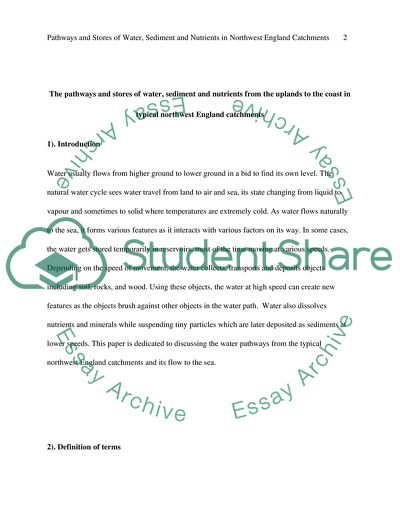Cite this document
(The Pathways and Stores of Water, Sediment and Nutrients from the Coursework - 1, n.d.)
The Pathways and Stores of Water, Sediment and Nutrients from the Coursework - 1. https://studentshare.org/geography/1755655-identify-the-pathways-and-stores-of-water-sediment-and-nutrients-from-the-uplands-to-the-coast-in-typical-northwest-england-catchments
The Pathways and Stores of Water, Sediment and Nutrients from the Coursework - 1. https://studentshare.org/geography/1755655-identify-the-pathways-and-stores-of-water-sediment-and-nutrients-from-the-uplands-to-the-coast-in-typical-northwest-england-catchments
(The Pathways and Stores of Water, Sediment and Nutrients from the Coursework - 1)
The Pathways and Stores of Water, Sediment and Nutrients from the Coursework - 1. https://studentshare.org/geography/1755655-identify-the-pathways-and-stores-of-water-sediment-and-nutrients-from-the-uplands-to-the-coast-in-typical-northwest-england-catchments.
The Pathways and Stores of Water, Sediment and Nutrients from the Coursework - 1. https://studentshare.org/geography/1755655-identify-the-pathways-and-stores-of-water-sediment-and-nutrients-from-the-uplands-to-the-coast-in-typical-northwest-england-catchments.
“The Pathways and Stores of Water, Sediment and Nutrients from the Coursework - 1”. https://studentshare.org/geography/1755655-identify-the-pathways-and-stores-of-water-sediment-and-nutrients-from-the-uplands-to-the-coast-in-typical-northwest-england-catchments.


